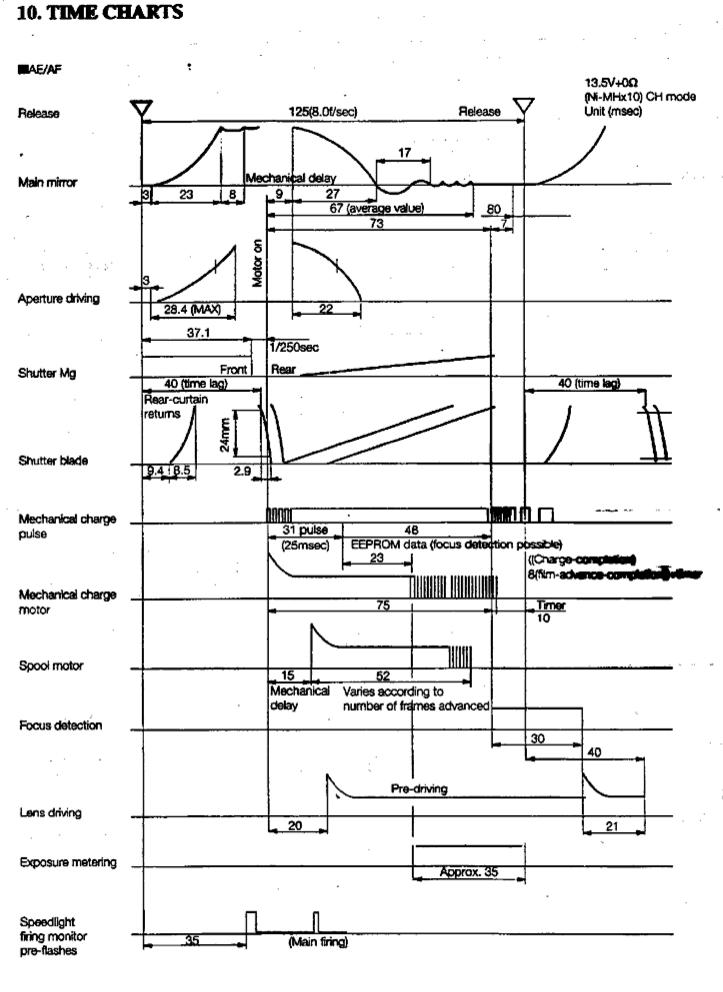Nikon F5 and D3 Shared Genes
The F5 was a significant technological tour de force from Nikon in 1996. It broke new ground in many areas, one of which was speed. A key aspect of the camera’s performance was the reduction of mirror bounce, which resulted in decreased blackout time.
Mirror Dampening in F5
Nikon F5 was the first SLR from Nikon to use the mirror balancer, which is now standard on all high performance Nikon SLRs, including the D3. The best description of the mirror balancer I have found was at the Nikon D Technology site, where a flash movie shows how the mirror balancer operates. Unforunately the site is no longer available.
The following patent US 5768644 might describe the original invention in the F5
As to how effective the mirror balancer is, this can be seen from a slow motion video of the D3, posted recently on Youtube.
Another interesting perspective on the D3 mirror and shutter timing can be obtained from a sequence put together by Marianne Oelund, turned into a web movie by Jeffrey Friedl.
Here is a slow motion movie of the Nikon F5 mirror/shutter:
The Nikon D4 shutter can be seen in action here:
Finally a D4 to D4s comparison was posted by Nikon.
Extremely Fast Sequencing
The D3 has a 37 millisecond shutter lag, and 74 millisecond blackout. To achieve this level of speed must take extremely high precision and performance. Information regarding the D3 sequencing is not available, but we can learn something from its ancestor, the F5.
Here is a page from the F5 repair manual, which depicts the camera’s sequencing.
From above, we can see that the F5 shutter lag is about 40 milliseconds. The time it takes for the shutter curtains to travel is 2.9 milliseconds. I am not quite sure how the viewfinder blackout time is calculated, but it seems that if we count from the time of release, then the mirror is down and stable in about 93 milliseconds, though it another 10 milliseconds for it to be completely stable. Interestingly, metering starts earlier, but focus detection can only start when the mirror is completely stable. Perhaps this explains why Canon’s attempt to get AF working at 10 fps is proving to be a challenge.
I think that the following patent US 5842065 may be related to the F5 as well:
Improvements in Nikon D4
Shutter Lag and Viewfinder Blackout times
The following table shows the shutter lag and viewfinder blackout times of various Nikon SLRs. The information for digital SLRs was obtained from Nikon’s published brochures. It is harder to get information about film cameras.
